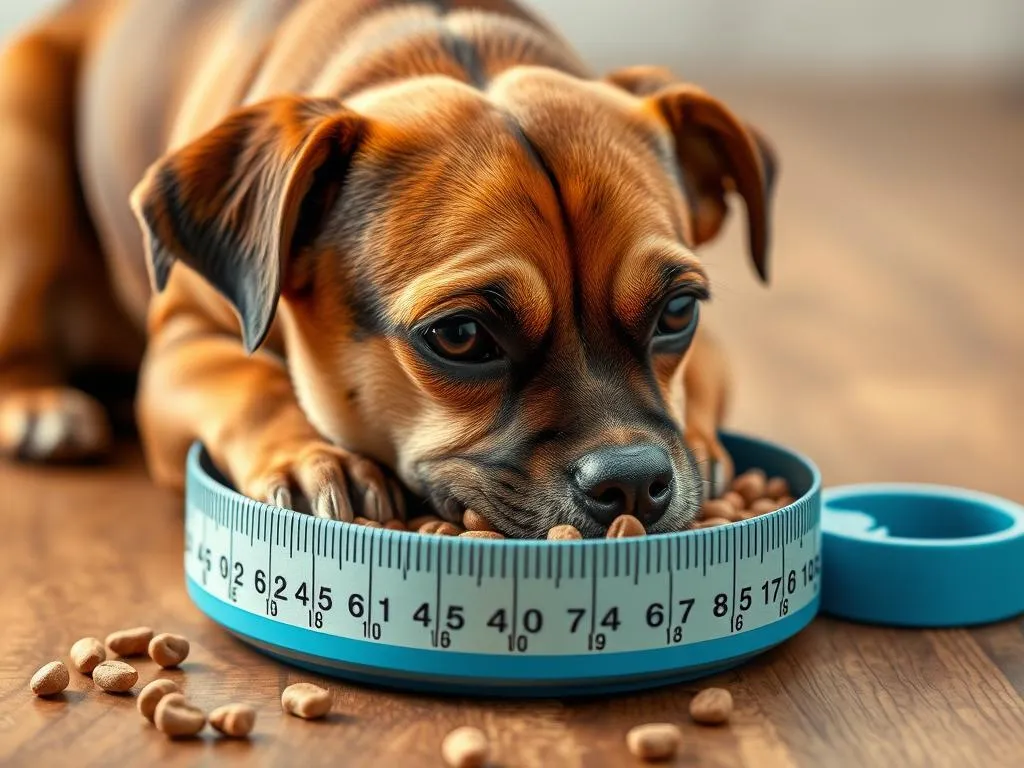
Introduction
Proper dog nutrition is essential for the overall health and well-being of our furry companions. Just like humans, dogs require a balanced diet to thrive, which includes the right mix of macronutrients and micronutrients. One of the critical aspects of ensuring that your dog receives adequate nutrition is understanding how to measure dog food portions accurately.
Measuring food portions is crucial for maintaining your dog’s ideal weight, supporting their energy needs, and preventing health issues related to overfeeding or underfeeding. In this article, we’ll explore the fundamentals of dog nutrition, factors that influence food portions, and practical tips for ensuring that your dog receives the right amount of food.
Understanding Dog Nutrition
Importance of Balanced Nutrition
A balanced diet for dogs typically includes three macronutrients: proteins, fats, and carbohydrates.
- Proteins are vital for building and repairing tissues and are essential for the growth of puppies and the maintenance of adult dogs.
- Fats provide a concentrated source of energy and are crucial for the absorption of fat-soluble vitamins.
- Carbohydrates serve as a quick energy source and are important for digestive health.
In addition to macronutrients, micronutrients—which include vitamins and minerals—play a significant role in maintaining your dog’s health. These nutrients support various bodily functions, from immune system health to bone strength.
Common Nutritional Needs by Dog Size
The nutritional requirements of dogs can vary significantly based on their size and breed.
- Small breeds typically have higher metabolic rates and may require more calorie-dense food.
- Medium breeds have a more balanced caloric need and can often consume a standard dog food formulation.
- Large breeds often require diets formulated to support joint health and maintain an appropriate weight to avoid stress on their bodies.
Additionally, the life stage of your dog—puppy, adult, or senior—affects their nutritional needs. Puppies need more calories and nutrients for growth, while senior dogs may require fewer calories and more fiber to support digestion.
Factors Influencing Dog Food Portions
Dog’s Age and Life Stage
Understanding your dog’s age and life stage is vital when determining their food portions. Puppies require more calories to support their rapid growth and development, while adult dogs need a balanced diet to maintain their weight. Senior dogs often need fewer calories, and their diets should focus on easy-to-digest ingredients to accommodate their slowing metabolism.
Dog’s Weight and Body Condition
The ideal weight for dogs varies significantly between breeds. Knowing your dog’s ideal weight is essential for portion control.
The Body Condition Score (BCS) is a useful tool that assesses whether your dog is underweight, ideal weight, or overweight. It usually ranges from 1 to 9, where 1 indicates an extremely thin dog and 9 indicates an obese one.
Regularly assessing your dog’s BCS can help you adjust food portions accordingly to maintain a healthy weight.
Activity Level and Lifestyle
Your dog’s activity level significantly impacts their caloric needs. An active dog, who exercises regularly and engages in play, will require more calories than a sedentary dog.
Factors such as age, breed, and overall health also influence activity levels. Keeping track of your dog’s daily activities can help you determine if you need to adjust their food portions.
How to Measure Dog Food Portions
Understanding Serving Sizes
When it comes to how to measure dog food portions, serving sizes provided on dog food packaging are a good starting point. These guidelines typically consider your dog’s weight and activity level.
However, it’s essential to consult with your veterinarian to tailor these recommendations to your dog’s specific needs, particularly if they have any health conditions or unique dietary requirements.
Using Measuring Tools
To accurately measure dog food portions, consider using the following tools:
- Measuring Cups: These are convenient for dry kibble. Ensure you use a standard cup measurement for consistency.
- Food Scales: A digital kitchen scale provides precise measurements, especially for wet food. This method is ideal for dogs on specific diets or weight loss plans.
- Scoopers: Some food brands offer scoopers that correspond to their product’s serving sizes. These can be handy for quick feeding.
Each method has its pros and cons. Measuring cups are easy to use but can lead to inconsistencies if not used correctly. Scales provide accuracy but may take more time.
Calculating Daily Intake
Calculating your dog’s daily caloric needs can help you determine their portion sizes accurately. The general formula to estimate your dog’s daily caloric needs is:
- For weight maintenance: 30 x (weight in kg) + 70 = daily caloric needs
- For weight loss: 20 x (weight in kg) + 70 = daily caloric needs
Once you have this figure, divide it by the caloric content of the food (usually found on the packaging) to determine the appropriate portion size.
Adjusting Portions
Regular monitoring of your dog’s weight and overall health is crucial for adjusting portions. If your dog is gaining weight, consider decreasing the portion size or increasing exercise. Conversely, if they are losing weight or seem lethargic, you may need to increase their food intake.
Keeping a feeding diary can help track changes and ensure that you are providing the correct portions over time.
Common Mistakes in Dog Food Portioning
Overfeeding vs. Underfeeding
One of the most common mistakes pet owners make is miscalculating food portions, leading to overfeeding or underfeeding.
- Overfeeding can lead to obesity, which is associated with numerous health issues such as diabetes, joint problems, and heart disease.
- Underfeeding can result in malnutrition, stunted growth in puppies, and decreased energy levels in adult dogs.
Finding the right balance is crucial for your dog’s long-term health.
Misinterpreting Packaging Instructions
Dog food packaging often contains feeding guidelines, but these can sometimes be misleading or generalized. Many owners misinterpret these instructions, leading to incorrect portion sizes.
It’s essential to read and interpret these guidelines carefully, taking into account your dog’s specific needs, such as their activity level and health status.
Not Considering Treats and Extras
Treats are a delightful way to bond with your dog, but they can significantly impact their daily caloric intake. It’s important to account for treats when calculating the total food portions.
A good strategy is to reduce meal sizes if you plan to give treats, ensuring that you don’t exceed your dog’s caloric needs.
Special Dietary Needs
Dogs with Health Issues
Dogs with specific health issues, such as diabetes, allergies, or digestive disorders, may require customized diets and portion adjustments. For example, dogs with diabetes may benefit from a high-fiber diet to stabilize blood sugar levels.
Always consult your veterinarian for recommendations tailored to your dog’s health conditions.
Choosing the Right Food
Selecting the right food for your dog is crucial. With so many options available, it can be overwhelming. Consult with your vet to determine the best diet for your dog’s specific needs, whether that be grain-free, low-fat, or for sensitive stomachs.
Conclusion
Measuring dog food portions accurately is essential for maintaining your dog’s health and well-being. By understanding your dog’s nutritional needs, monitoring their weight and activity levels, and utilizing proper measuring techniques, you can ensure that your furry friend receives the right amount of nutrition. Regularly adjusting portions based on their needs and consulting with a veterinarian can help you maintain their health in the long run.
Taking the time to learn how to measure dog food portions correctly not only supports your dog’s physical health but also contributes to their happiness and longevity.









